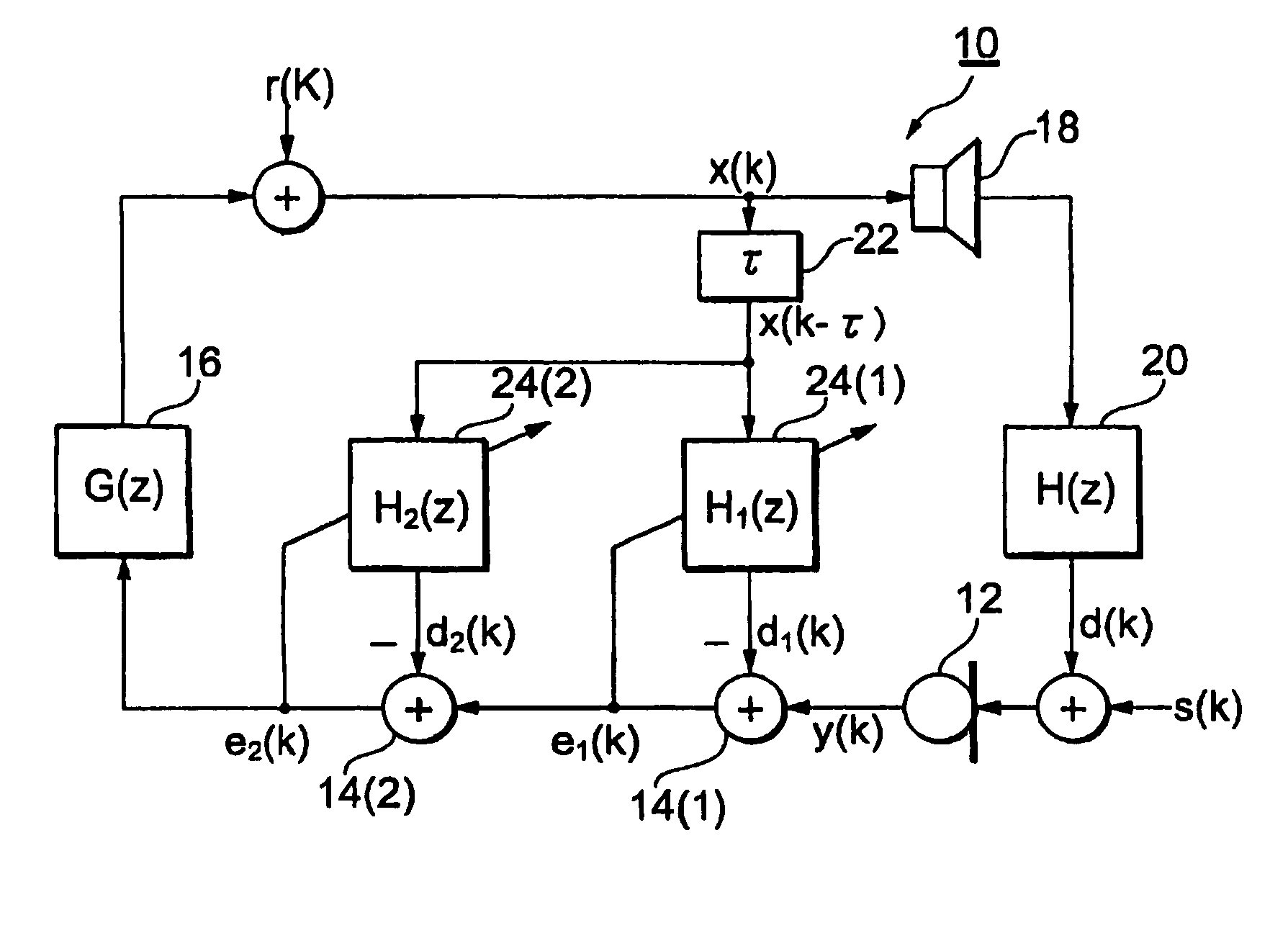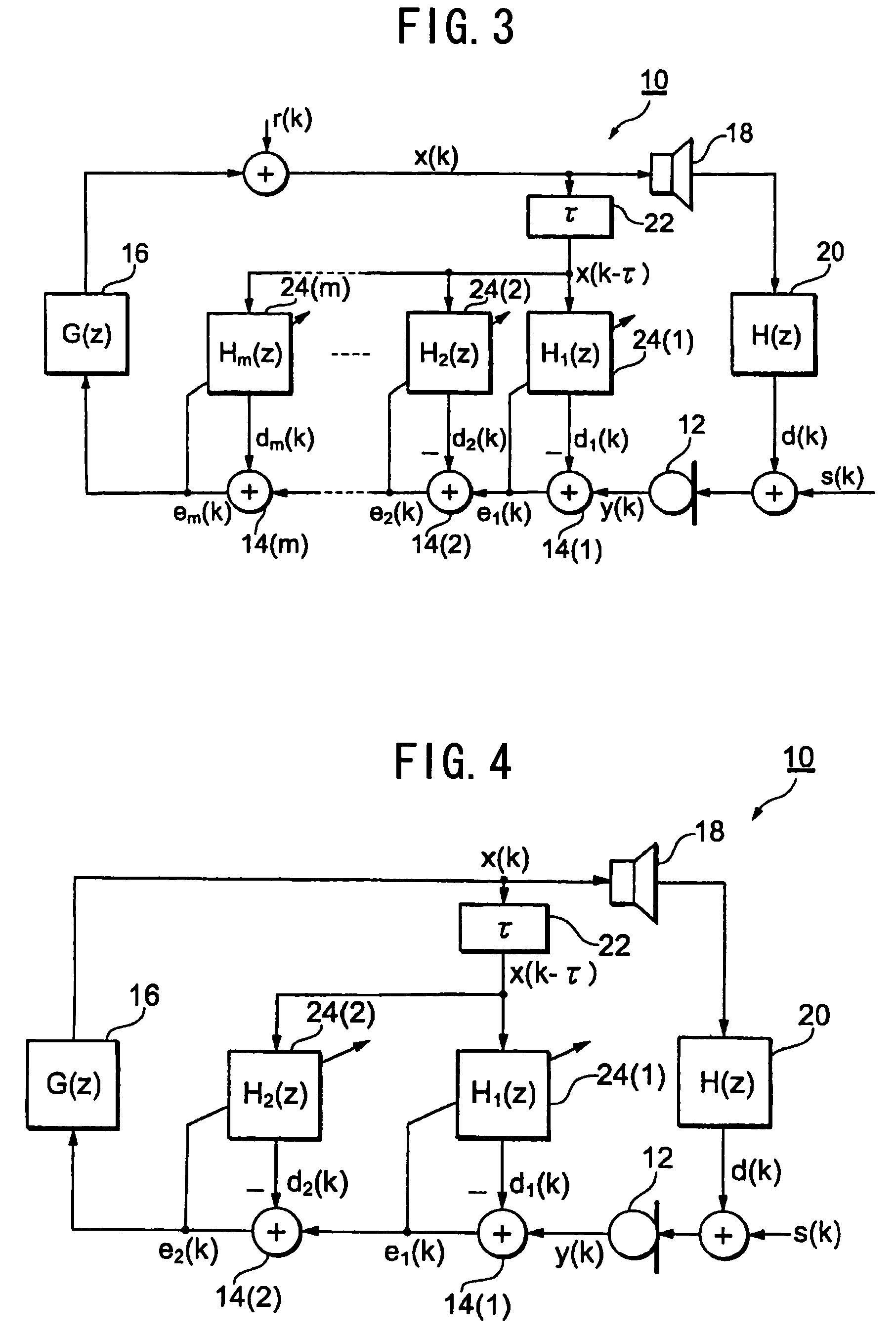Adaptive howling canceller
a canceller and howling technology, applied in the field of adaptive cancellers, can solve the problems of significant severe impact on sound quality, etc., and achieve the effect of alleviating the degradation of sound quality and improving the estimation precision of filter coefficients
- Summary
- Abstract
- Description
- Claims
- Application Information
AI Technical Summary
Benefits of technology
Problems solved by technology
Method used
Image
Examples
Embodiment Construction
[0038]FIG. 1 shows a sound-reinforcement system incorporating the adaptive howling canceller in accordance with a first preferred embodiment of the present invention. In a given space such as an auditorium or a hall, a microphone 12 and a speaker 14 are placed. The audio signal input through the microphone 12 is transformed to signal y(k) in the digital form by an A / D conversion process. The signal y(k) is fed through adder units 14 (1), 14 (2) to an amplifier unit 16 for amplification. The amplifier unit 16 may or may not have a filter function (frequency component change function) in addition to amplification function. G(z) designates to a transfer function of the amplifier unit 16. Signal x(k) output from the amplifier unit 16 is D / A converted to a signal in the analog form, which signal is then transformed by the speaker 18 to the acoustic sound. Here r(k) indicates noise component, and the symbol of adder which receives r(k) indicates that some noise is penetrated.
[0039]An acou...
PUM
 Login to View More
Login to View More Abstract
Description
Claims
Application Information
 Login to View More
Login to View More - R&D
- Intellectual Property
- Life Sciences
- Materials
- Tech Scout
- Unparalleled Data Quality
- Higher Quality Content
- 60% Fewer Hallucinations
Browse by: Latest US Patents, China's latest patents, Technical Efficacy Thesaurus, Application Domain, Technology Topic, Popular Technical Reports.
© 2025 PatSnap. All rights reserved.Legal|Privacy policy|Modern Slavery Act Transparency Statement|Sitemap|About US| Contact US: help@patsnap.com



